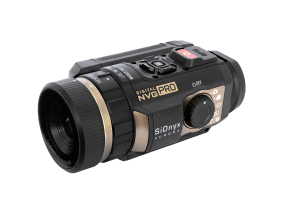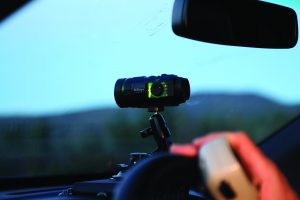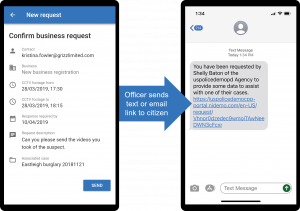As technology continues to expand, so does the type of information that can be collected as evidence to assist in an investigation. From body-worn camera, dashcam, and CCTV footage to photos, emergency call recordings, and mobile device data, the list is endless.
This advancement can bring many benefits to an agency’s reputation, but it can alternatively affect the evidence management department. The problem is that many law enforcement agencies are treating digital evidence similar to how they would physical evidence. These mass volumes must be managed effectively and shared securely, but in some cases, agencies do not have the capability to obtain evidence directly through one platform. They are instead driving to a scene, placing the evidence onto loose media such as a disc or thumb drive, and then transporting that evidence from the scene to the department to upload onto another digital platform. This creates a longer process and requires additional employees to complete a task.
Pile on the employee shortages and budget restrictions that many agencies are encountering, and this situation becomes even more problematic for agency leadership.
Luckily, multiple companies have recognized these inefficiencies and have set out to streamline the digital evidence process from collection to the courtroom.
Collection
The life cycle of digital evidence begins with collection.
A Massachusetts-based company, SIONYX, specializes in just that. They offer a family of high-resolution digital cameras that see exceptionally well at night.

The SIONYX Aurora PRO is the flagship full-color digital night vision optic. With what the company calls “moonless starlight,” users can see well beyond human eyesight in low-light conditions.1 What makes this night vision camera stand apart from traditional night vision or thermal imaging is its full-color capability. Because of SIONYX’s black silicon technology, while looking into the camera, an officer can gather pertinent information such as an individual’s facial features, what color clothes they are wearing, and what color vehicle they may be driving.

Designed with a handheld video recorder in mind, the Aurora PRO can be used for quick and agile surveillance and observation missions. Due to an attachment on the belly of the camera, it can also be attached to a tripod or pole to be utilized as a long-term, yet temporary, evidence gathering camera. The camera battery can last up to 2.5 hours of continuous run time, but it can be plugged into an external power source for longer use.
Although the camera performs best in dark conditions, it features day, twilight, and night modes. With the inclusion of a timestamp and GPS coordinates on the screen, the Aurora PRO footage is admissible in many courts.
Each camera within the Aurora family has its own Wi-Fi on board, and the camera itself serves as the host. This allows a user to connect to the Aurora PRO to any smart device—laptop, tablet, or phone—and wirelessly stream a live feed through a mobile app.
Management
Once the video footage and images have been obtained, an agency needs to maintain and combine that evidence into one secure file.
A U.S.-based developer of data workflow solutions for large, complex datasets can help. Growing up on the route of the Boston Marathon, CEO and cofounder of Common Caches, Scott Landman, was deeply affected by the 2013 bombings. Following his review of the after-action report, what stood out were the challenges for law enforcement when managing digital evidence. This led to further research and, ultimately, the development of Media Share.
“Built as a force multiplier with an apex benefit to find the needle in the haystack faster, the application enables customers to process growing datasets without an unsustainable increase in time or resources,” explained Landman.2
The stand-alone application is fit for multiple use cases, including data aggregation, crowdsource intelligence, and metadata enrichment among many others. By utilizing Media Share, officers can easily search and share the stored data. With the option to permanently or temporarily share information, an agency can control what is being shared, with whom, on what terms, and for how long.
It adapts to existing and future workflows, policies, and budgets with a highly customizable interface based on the specific use cases of the department. Additional modules can be added to the system with zero downtime during the update.
Media Share can be expected on the market later this year. “After the full commercial release of Media Share, we hope that many of the limitations [in digital evidence management] will be addressed, resulting in faster time-to-evidence, lower storage costs, and greater transparency,” said Landman.
Also looking to automate the digital evidence process is CentralSquare Technologies, which is headquartered in Lake Mary, Florida.
CentralSquare’s Digital Evidence Management Solution (DEMS) collects digital evidence, automates associations between files and cases, manages data between CAD and RMS, and shares digital evidence based on established privileges and sharing policies in a seamless workflow. Powered by Genetec, CentralSquare DEMS allows workflow in either direction to support the collection and storage of evidence, as well as the sharing of evidence through permission-based access to assist police departments in solving cases in the community and prosecutors presenting evidence in the courtroom.
As agencies share evidence securely, they also have the option to redact information to mask personally identifiable information when needed. Additionally, CentralSquare DEMS automatically creates an audit trail for each case and individual piece of evidence within the system, identifying who touched the evidence and when.3
Presentation in Court
The life cycle of digital evidence is finalized in court. NICE is not only changing the law enforcement profession’s evidence management workflow but jurisdictions as a whole.

Initially embraced in the United Kingdom and gaining traction in the United States, NICE Investigate operates as a hub for all the agency’s digital evidence. When paired with NICE Justice, an entire jurisdiction can be transformed.
Knowing how much change these solutions can bring to a department, NICE hopes to completely transform the evidence management department through the use of their platform. “We call it digital transformation,” said Vice President of Strategy and Business Development Rod Guy. “It’s not just a place to store information; it’s actually transforming how [agencies] do their work.”4

When a case is created and assigned to an investigator, all the evidence is brought into the case folder automatically. Tools within NICE Investigate include reconstructing incidents; synchronizing playback of video, audio, and photos; annotating media; and uncovering connections within the data that may have been missed when using various media forms.
That case folder can then be shared electronically with internal or external stakeholders and partners, removing the step of making copies of the evidence to physically hand over. When it is time to share the case folder, the data are shared via a portal that gives a prosecutor access to stream or download. With NICE Justice, however, NICE Investigate can hand off the package to the NICE Justice platform, which works in conjunction to the prosecutor’s case management system.
There are a variety of digital collection and management systems available to the policing profession; each have their own unique benefits to meet the needs of a specific department. All, however, are working to streamline the digital evidence management process through the entire life cycle of a case.d
Notes:
1Tom Frane (senior vice president of sales and marketing, SIONYX), phone interview, April 13, 2022.
2Scott Landman (CEO and cofounder, Common Caches), email interview, April 13, 2022.
3Kristine Concepcion (director of corporate communications, CentralSquare Technologies), email interview, April 21, 2022.
4Rod Guy (vice president of business and strategy, NICE Public Safety), phone interview, April 19, 2022.
|
SOURCE LIST Please click on the companies’ names to go to their websites or visit the Police Chief Buyers’ Guide to request information from companies. |
||
|
|
Focal Forensics – Video Redaction Services Forensic Technology |
|


